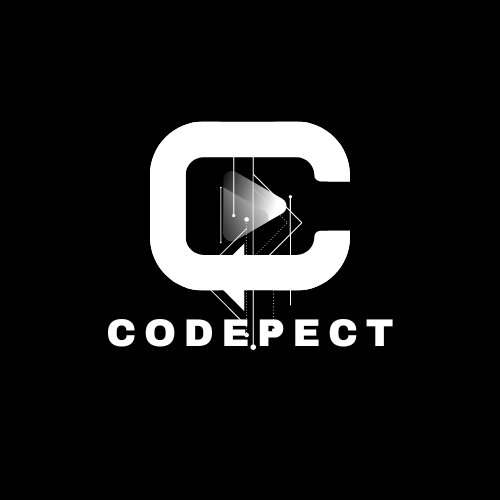Docker Introduction
In this chapter, we delve into the world of Docker. Discover how Docker enables you to interact with Containers, Images, and can Deliver Softwares Fastly.
1.1 What Is Docker?
Docker is an open-source platform that allows you to package your application and its dependencies into a lightweight, portable container. These containers can run on any machine with Docker installed, regardless of the operating system. By using the host’s OS kernel, Docker ensures consistency and eliminates compatibility issues. Think of it like a shipping container that holds everything your application needs, making it easy to move and run anywhere.
1.2 Why was Docker Needed ?
Docker helps streamline the development process by using containers, which create consistent environments for your applications. This is especially useful for CI/CD workflows.
Here’s how it works:
- Developers write code locally and share it using Docker containers.
- They push the application to a test environment and run tests.
- If bugs are found, they fix them in the development environment and retest.
- Once testing is complete, they push the updated image to the production environment for customers.
This makes the process of developing, testing, and deploying applications more efficient and reliable
1.3 Characterstics of Docker?
- Portability: Packages applications with all dependencies into lightweight containers, ensuring consistent performance across different environments.
- Reproducibility: Encapsulates applications with their dependencies, maintaining consistent setups across development, testing, and production.
- Efficiency: Optimizes resource utilization through container-based architecture, allowing multiple isolated applications to run on a single host.
- Scalability: Facilitates easy handling of increased workloads with its scalability features.
- Isolation: Provides isolated environments for applications, preventing conflicts with other programs on the host system.
- Rapid Deployment: Enables quick deployment of applications by using pre-built container images.
- Version Control: Supports versioning of container images, making it easy to roll back to previous versions if needed.
- Security: Enhances security by isolating applications from the host system and other containers.
- Flexibility: Compatible with various platforms and cloud services, offering flexibility in deployment.
- Community Support: Backed by a large community, providing extensive resources, tools, and support for developers.
1.4 Prerequisite of Learning Docker?
- To get started with Docker, here are some basic prerequisites:
- Basic Linux Knowledge: Familiarity with terminal navigation and file system concepts.
- Understanding of Command-Line Interfaces: Comfort with using command-line tools.
- Networking Fundamentals: Basic knowledge of IP addresses, ports, and TCP/IP
- System Requirements: A 64-bit installation and a compatible operating system kernel
1.5 Docker Installation?
Installing Docker on Windows
Check System Requirements:
- Windows 10 64-bit: Pro, Enterprise, or Education (Build 15063 or later).
- Enable the WSL 2 feature on Windows.
Download Docker Desktop:
- Go to the Docker Desktop for Windows page and download the installer.
Enable WSL 2:
- Open PowerShell as Administrator and run:
- Open PowerShell as Administrator and run:
dism.exe /online /enable-feature /featurename:Microsoft-Windows-Subsystem-Linux /all /norestart
dism.exe /online /enable-feature /featurename:VirtualMachinePlatform /all /norestart
- Restart your computer.
- Download and install the Linux kernel update package.
Install Docker Desktop:
- Run the Docker Desktop Installer executable.
- Follow the installation wizard steps.
- During installation, ensure the option to use WSL 2 instead of Hyper-V is selected.
Start Docker Desktop:
- After installation, Docker Desktop will start automatically.
- You can also start it from the Start menu.
Verify Installation:
- Open a command prompt and run
docker --version
Installing Docker on macOS
Check System Requirements:
- macOS must be version 10.14 or newer.
Download Docker Desktop
- Go to the Docker Desktop for Mac page and download the installer
Install Docker Desktop
- Open the downloaded
.dmgfile. - Drag the Docker icon to the Applications folder.
Start Docker Desktop
- Open Docker from the Applications folder.
- You may be prompted to enter your password to allow Docker to install its components.
Verify Installation:
Open a terminal and run
docker --version
- You should see the Docker version information.
- These steps should help you get Docker up and running on both Windows and macOS.
Commonly Asked Docker Queries
Understanding Docker: Essential Insights and Solutions
What is Docker Compose?
Docker Compose is a tool that simplifies the process of managing multi-container Docker applications. It allows you to define and run multiple containers as a single service using a YAML file.
How to build a Docker image?
FROM node:14
COPY . /app
WORKDIR /app
RUN npm install
CMD [“node”, “app.js”]
How to use Docker volumes?
Docker volumes are used to persist data generated by and used by Docker containers. They are the preferred mechanism for persisting data because they are managed by Docker and work on both Linux and Windows containers.
What are Docker containers?
Docker containers are lightweight, standalone, and executable software packages that include everything needed to run an application. They share the host system’s kernel but run in isolated environments, ensuring consistency across different setups.
How to manage Docker networks?
Docker networks enable communication between Docker containers and external services
What is Docker Swarm?
Docker Swarm is Docker’s native clustering and orchestration tool, designed to manage and scale containerized applications across multiple hosts.


